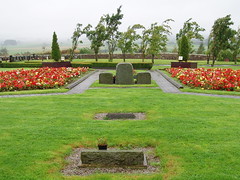 Image by amandabhslater via Flickr
Image by amandabhslater via Flickr
Last December marked the 20th anniversary of the downing of Pan Am 103 in Lockerbie, Scotland. Because I kept no diaries and took no photographs, I have only impressionistic memories of the scene. But they are still vivid even now.
I remember observing on my first visit to Lockerbie, as one of several junior officers who would play a part, that the houses appeared to have been sliced at the very angle of the giant plane’s path to earth.
[…]
Afterward, I remember feeling that I had absorbed so much sadness, often in cold and darkness. I asked for time to decompress, but could be spared for only one day. Instead of a direct train to London, I decided to detour to the Lake District, where some of my favorite poets had lived, and where I hoped my spirits could revive.At Lake Grasmere, perhaps the most picturesque spot in Great Britain, signs of spring had started to appear: sparkling sun, bright green grass, innumerable white clouds. There, on a gently sloping hillside, I wept. Images, conversations, interactions and procedures all ran through my mind. But nothing really answered the question of “Why?” As the sun went down, I arose, dried my tears, picked up my bag and headed back to town, the bus station and London.
Excerpt from Recalling Lockerbie
By Mitchell Cohn
Mr. Cohn, a Foreign Service officer since 1985, is currently a cultural affairs officer in Rabat. Previous assignments include Mexico City, London, Istanbul, Jakarta, Tunis and Washington, D.C. This is excerpted from a longer piece solicited by the State Department’s Bureau of Consular Affairs in honor of the Lockerbie victims’ families.
Foreign Service Journal | Read in full see p.68 | April 2009



No comments:
Post a Comment